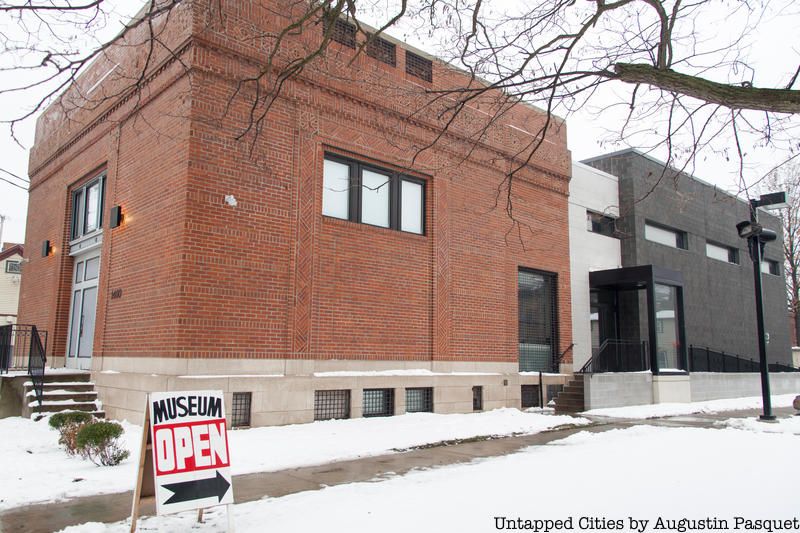NYC Just Had Its Worst Year for Brush Fires this Decade
As brush fires continue to rage in the New York area, data shows that they’ve become more prevalent in recent years.


Earlier this year, the revitalization of Cleveland, Ohio was highlighted in Salon Magazine for leading the trend among Rust Belt cities in attracting the coveted “knowledge economy” class of the young and creative. With the repurposing of an abandoned mall in Cleveland into gardens for urban agriculture in Cleveland forming a bottom’s up approach, the city has also recognized the importance of the arts as a catalyst for the region’s economic comeback.
Cleveland’s two major arts institutions, Museum of Contemporary Art (MOCA) and the Cleveland Museum of Art, located in the culturally rich University Circle hub, celebrated exciting achievements in October. The Museum of Contemporary Art opened its new building by Farshid Moussavi, marking the United States debut and first museum design for the Iranian-born, London based architect. The six-sided building clad in black mirrored steel reflects just about everything. Sitting on a busy intersection, its ever changing faà§ade is a photographer’s dream. The 34,000-square-foot building begins with six faceted sides on a hexagonal base and transitions up to a square roof. Works of art are loaded into MOCA with the coolest, disappearing loading dock around.
Meanwhile, the Cleveland Museum of Art (CMA) revealed a state-of-the-art atrium that is now one of the largest public spaces in the city. With its 66 foot high, 39,000 square foot, skylighted Atrium, designed by New York architect, Rafael Vià±oly, (after a national search with famous finalists such as Frank Gehry, Lord Norman Foster and Pei Cobb Freed & Partners), the Atrium is the central hub of the $350 million expansion and renovation designed a decade ago. The Atrium joins the new wings to the 1916 Beaux-Arts-style original building and the 1971 Education wing designed by Marcel Breuer. “This dynamic space will offer opportunities for temporary art installations, performances and special events,” said David Franklin, Director of CMA. It is an awe-inspiring setting where one feels downright contemplative as they stand under the glass-and-mullion atrium roof. With the sky above constantly changing, the light allows the expanse to undergo a continual metamorphosis.
Across town, a collaboration of private and public sectors has resulted in a gift to the citizens of the Cleveland area: the Transformer Station. Located in a 1924 building originally built as a streetcar transformer station, the building is being restored concurrently with the addition of a new, attached gallery space. Its founders, Fred and Laura Ruth Bidwell, are partnering with the Cleveland Museum of Art in a most unusual arrangement: the Bidwells will curate and exhibit works of art from their own collection for six months of the year and the Cleveland Museum of Art will finally reach out beyond their University Circle borders and offer exhibitions of contemporary art west of the Cuyahoga river. A win-win for all. The Transformer Station is set to open on February 1, 2013.

Cleveland is also home to various organizations across the city with specific roles: The Morgan Art of Papermaking Conservatory and Education Foundation, a non-profit art center dedicated to the preservation of handmade paper making and the art of the book, is located in a former machine shop renovated in 2006 to accommodate a large gallery as well as the paper making and print areas. The Cleveland Print Room offers studio workspace and exhibition opportunities to the public, while the The Sculpture Center exhibits the works of emerging and established artists of the region.
Along with the popular arts neighborhoods such as 78th Street Studios in the Gordon Square Arts District, the Screw Factory Artists’ Studios in Lakewood and the St. Clair Superior Arts area, Cleveland’s arts scene plays a critical role in the rejuvenation of the city, helping it to overcome its outdated reputation for a city in distress. Major public arts funding through arts and cultural organizations, foundations and local governments are also helping to lead the way. The northern Ohio area is a wonderful example of blending the old with the new, of embracing its arts and architectural history while moving forward and doing things just a bit differently.
Subscribe to our newsletter